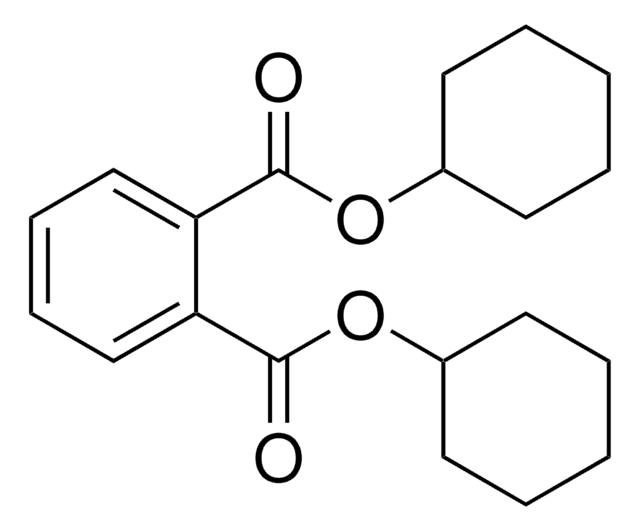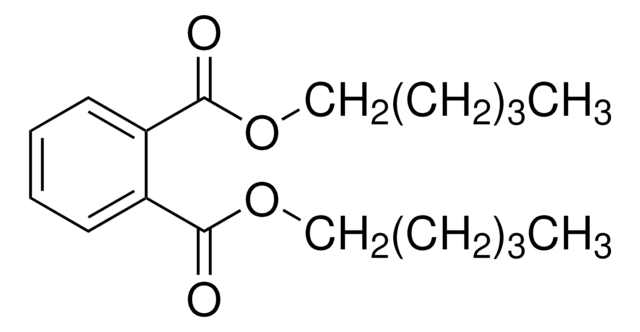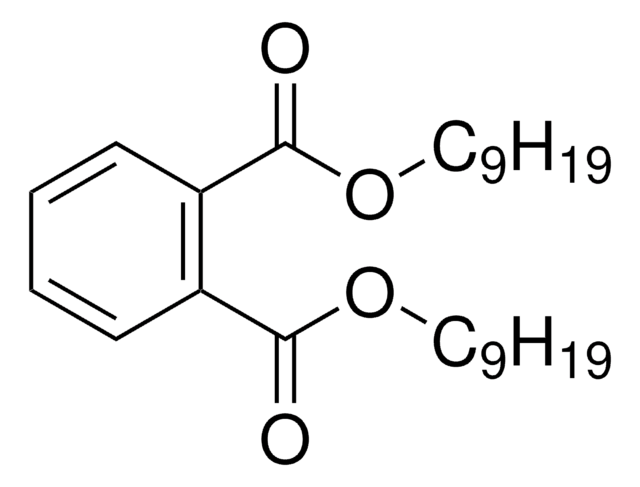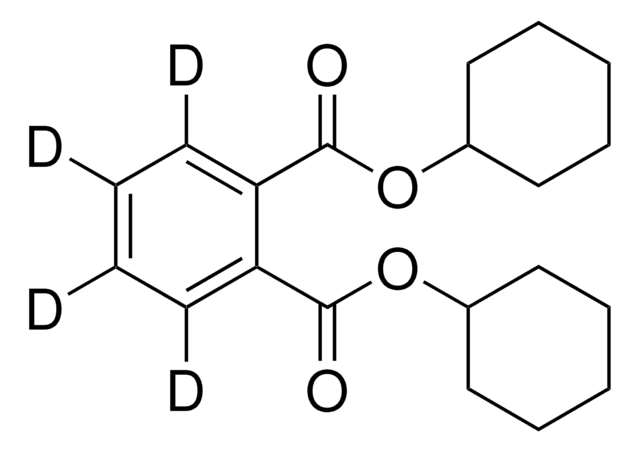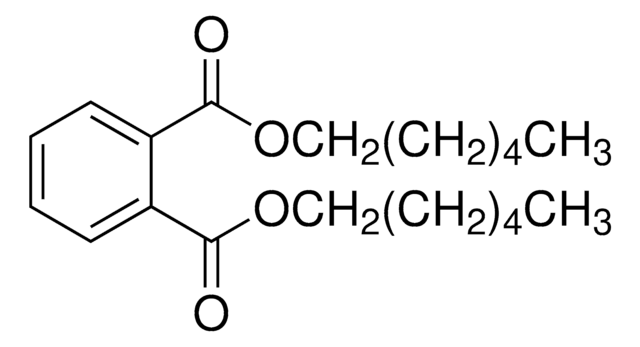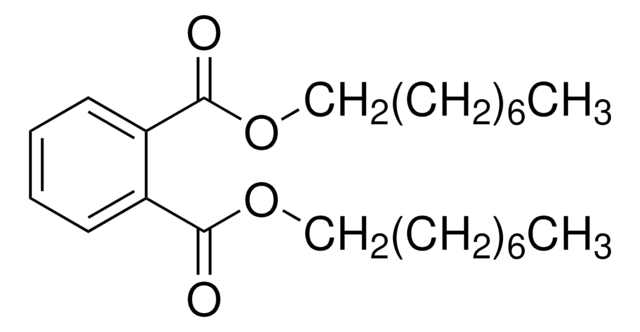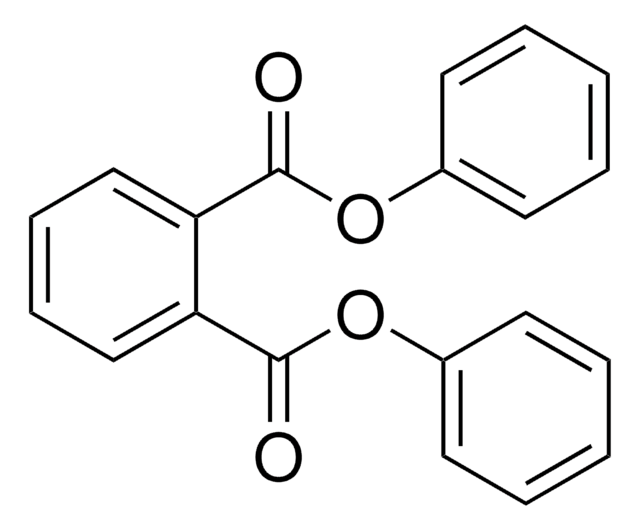Kluczowe dokumenty
36908
Dicyclohexyl phthalate
PESTANAL®, analytical standard
About This Item
Polecane produkty
klasa czystości
analytical standard
Poziom jakości
gęstość pary
11.6 (vs air)
ciśnienie pary
0.1 mmHg ( 150 °C)
linia produktu
PESTANAL®
okres trwałości
limited shelf life, expiry date on the label
metody
HPLC: suitable
gas chromatography (GC): suitable
mp
63-67 °C (lit.)
Zastosowanie
cleaning products
cosmetics
environmental
food and beverages
personal care
Format
neat
ciąg SMILES
O=C(OC1CCCCC1)c2ccccc2C(=O)OC3CCCCC3
InChI
1S/C20H26O4/c21-19(23-15-9-3-1-4-10-15)17-13-7-8-14-18(17)20(22)24-16-11-5-2-6-12-16/h7-8,13-16H,1-6,9-12H2
Klucz InChI
VOWAEIGWURALJQ-UHFFFAOYSA-N
Szukasz podobnych produktów? Odwiedź Przewodnik dotyczący porównywania produktów
Opis ogólny
Zastosowanie
Informacje prawne
Nie możesz znaleźć właściwego produktu?
Wypróbuj nasz Narzędzie selektora produktów.
produkt powiązany
Hasło ostrzegawcze
Danger
Zwroty wskazujące rodzaj zagrożenia
Zwroty wskazujące środki ostrożności
Klasyfikacja zagrożeń
Aquatic Chronic 2 - Repr. 1B - Skin Sens. 1
Kod klasy składowania
6.1C - Combustible acute toxic Cat.3 / toxic compounds or compounds which causing chronic effects
Klasa zagrożenia wodnego (WGK)
WGK 1
Temperatura zapłonu (°F)
356.0 - 374.0 °F
Temperatura zapłonu (°C)
180 - 190 °C
Środki ochrony indywidualnej
dust mask type N95 (US), Eyeshields, Gloves
Wybierz jedną z najnowszych wersji:
Masz już ten produkt?
Dokumenty związane z niedawno zakupionymi produktami zostały zamieszczone w Bibliotece dokumentów.
Klienci oglądali również te produkty
Produkty
A sensitive, quantitative, and reproducible SPME-GC/MS procedure was developed by Supelco for the extraction of phthalate esters from oily food matrices, such as the flavored oils included with ramen noodle kits.
Nasz zespół naukowców ma doświadczenie we wszystkich obszarach badań, w tym w naukach przyrodniczych, materiałoznawstwie, syntezie chemicznej, chromatografii, analityce i wielu innych dziedzinach.
Skontaktuj się z zespołem ds. pomocy technicznej